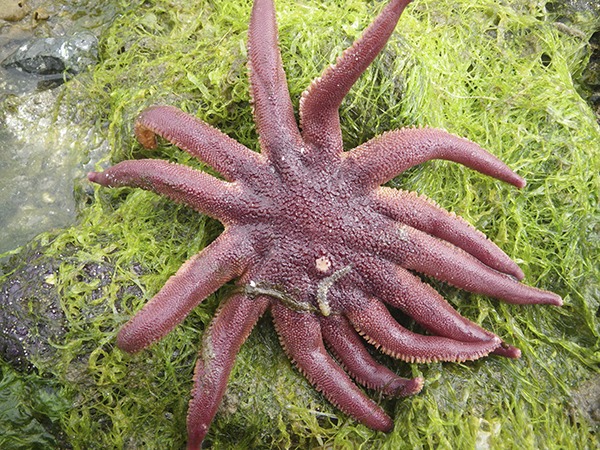Diversity and change are themes of this year’s Celebrate Indian Island event at Orcas Center on Nov. 20, hosted by the Indian Island Marine Health Observatory and the conservation laboratory Kwiaht. Doors open at 5:30 p.m., and the event is family friendly and free.
Once again, there will be entertainment, refreshments, and displays, including a first-time musical collaboration of Sharon Abreu and Michael Hurwicz with the Orcas Elementary Fifth Grade. There will be opportunities to hear from local volunteers, and help support local stewardship of Indian Island by “adopting” a species of your choice. “Adopt a species and wear its Indian Island photo button proudly,” says longstanding volunteer Marcia Spees, who adopted the Frosted Dirona sea slug.
This will be the fifth annual celebration of Indian Island at Orcas Center, and will summarize hundreds of days of volunteer monitoring and data collection since 2010.
“Sea surface temperatures hit record highs in the islands this year,” says Kwiaht ecologist Russel Barsh. Warm water may have contributed to heavy herring spawning in April, a massive fish-killing algal bloom in June, and a rapid decline in sea stars in July. “The Salish Sea is getting warmer and stormier,” Barsh says, “and these regional changes may affect Indian Island as much as local pollution and growing recreational use.”
Five years of data shows eelgrass density gradually edging downwards, especially in shallow water; while Bay Pipefish and Plainfin Midshipmen, two of the most charming and colorful fish at Indian Island, are showing signs of recovery. Changes in clam species suggest that the beach continues to grow siltier. Barsh will discuss these and other trends in a slideshow presentation at the November 20 event.
Thousands of tourists visited Indian Island in 2014, but according to Indian Island Marine Health Observatory coordinator Kelly Rose, energetic volunteer docents, and trail restrictions succeeded in limiting the impacts on birds and wildlife. There was actually an increase in native wildflowers on parts of the island that were closed for restoration.
A special feature of this year’s event is the launch of a contest to choose young artists for illustrating a children’s book in verse on Indian Island’s Black Oystercatchers. Betty (Rodenberger) Densmore contributed the text, and winners of the contest will work together this winter with commercial illustrator Laine Nichols. Details will be announced at the November 20 event, submissions are due in January, and the illustrated book will be previewed at the Orcas Island Bird and Wildlife Festival in May.
As a part of the San Juan Islands National Monument, Indian Island is monitored and interpreted by Kwiaht scientists and Orcas community members in partnership with the Bureau of Land Management, which will be represented at the Nov. 20 event by National Monument Manager Marcia DeChadenedes. Local stewardship of the island has also been supported by the San Juan County Lodging Tax, which paid for the Main Street sign in 2014 and will cover part of the cost of coordinating volunteers in 2015.



